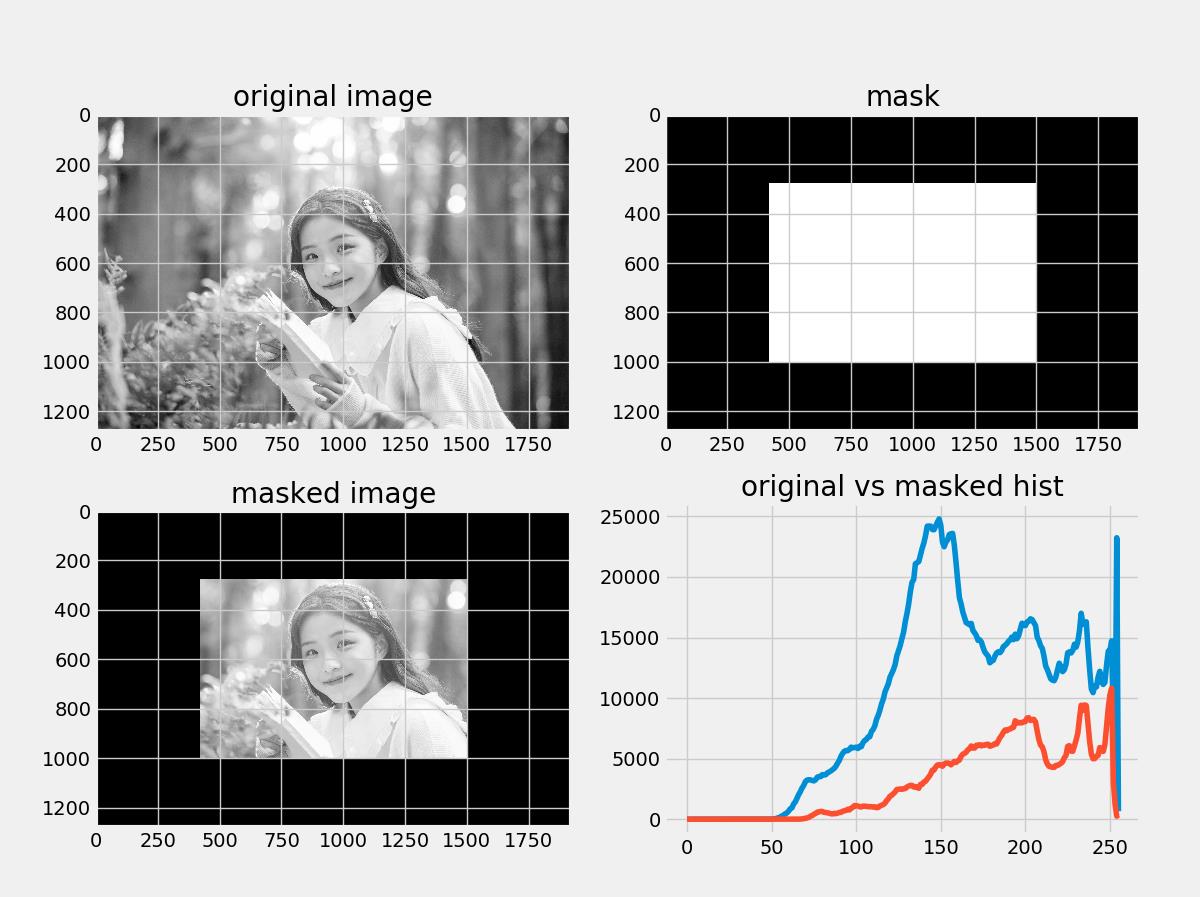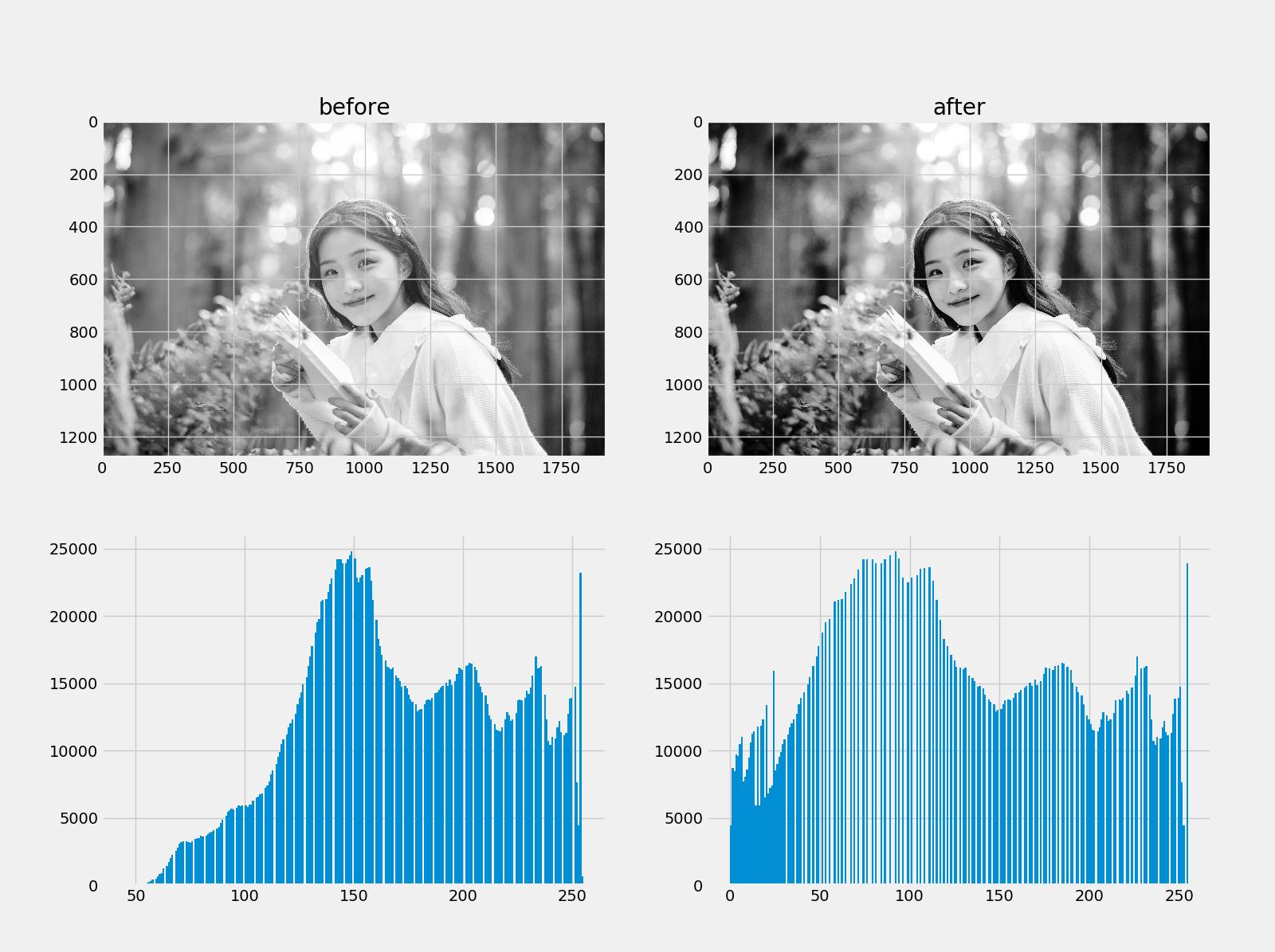OpenCV⚠️高手勿入! 半小时学会基本操作 15⚠️ 直方图
Posted 我是小白呀
tags:
篇首语:本文由小常识网(cha138.com)小编为大家整理,主要介绍了OpenCV⚠️高手勿入! 半小时学会基本操作 15⚠️ 直方图相关的知识,希望对你有一定的参考价值。
【OpenCV】⚠️高手勿入!⚠️ 半小时学会基本操作 15⚠️
概述
OpenCV 是一个跨平台的计算机视觉库, 支持多语言, 功能强大. 今天小白就带大家一起携手走进 OpenCV 的世界. (第 15 课)

直方图
原图:

cv2.calcHist()可以帮助我们统计像素并得到直方图.
格式:
calcHist(images, channels, mask, histSize, ranges, hist=None, accumulate=None)
参数:
- images: 输入图像
- channels: 颜色通道
- mask: 掩模
- histSize: bin 的数目, 用中括号括起来
- ranges: 像素范围 [0, 256]
例 1 (灰度图统计直方图):
import cv2
from matplotlib import pyplot as plt
plt.style.use("fivethirtyeight")
# 读取图片, 并转换成灰度图
img = cv2.imread("girl.jpg", 0)
# 获取直方图
hist = cv2.calcHist([img], [0], None, [256], [0, 256])
print(hist)
# 直方图展示
plt.figure(figsize=(12, 6))
plt.plot(hist)
plt.title("hist of image")
plt.show()
输出结果:

例 2 (RGB 三通道直方图):
import cv2
from matplotlib import pyplot as plt
plt.style.use("fivethirtyeight")
plt.figure(figsize=(12, 6))
# 读取图片
img = cv2.imread("girl.jpg")
# 颜色通道
color = ["b", "g", "r"]
# 获取直方图
for i, c in enumerate(color):
hist = cv2.calcHist([img], [i], None, [256], [0, 256])
plt.plot(hist, color=c)
# 直方图展示
plt.legend(["B Channel", "G Channel", "R Channel"])
plt.title("RGB hist of image")
plt.show()
输出结果:

直方图 + mask
例子:
import numpy as np
import cv2
from matplotlib import pyplot as plt
plt.style.use("fivethirtyeight")
# 读取图片, 并转换成灰度图
img = cv2.imread("girl.jpg", 0)
# 创建mask
mask = np.zeros(img.shape, np.uint8)
mask[280:1000, 420:1500] = 255
# 获取mask后的图像
masked_img = cv2.bitwise_and(img, img, mask=mask)
# 直方图
hist_full = cv2.calcHist([img], [0], None, [256], [0, 256])
hist_mask = cv2.calcHist([img], [0], mask, [256], [0, 256])
# 图片展示
f, ax = plt.subplots(2, 2, figsize=(12, 9))
ax[0, 0].imshow(img, 'gray')
ax[0, 0].set_title("original image")
ax[0, 1].imshow(mask, 'gray')
ax[0, 1].set_title("mask")
ax[1, 0].imshow(masked_img, 'gray')
ax[1, 0].set_title("masked image")
ax[1, 1].plot(hist_full)
ax[1, 1].plot(hist_mask)
ax[1, 1].set_title("original vs masked hist")
plt.show()
输出结果:

直方图均衡化
直方图均衡化 (Histogram Equalization) 是一种增强图片对比度的方法. 将一副图像的直方图分布变成近似均匀分布.
格式:
cv2.equalizeHist(src, dst=None)
例子:
import cv2
from matplotlib import pyplot as plt
plt.style.use("fivethirtyeight")
# 读取图片, 并转换成灰度图
img = cv2.imread("girl.jpg", 0)
# 均衡化
img_equ = cv2.equalizeHist(img)
# 直方图
f, ax = plt.subplots(2, 2, figsize=(16, 16))
ax[0, 0].imshow(img, "gray")
ax[0, 0].set_title("before")
ax[0, 1].imshow(img_equ, "gray")
ax[0, 1].set_title("after")
ax[1, 0].hist(img.ravel(), 256)
ax[1, 1].hist(img_equ.ravel(), 256)
plt.show()
输出结果:

相关推荐:
大家如果对 OpenCV-C++ 版本感兴趣,可以前往优质博主【AI 菌】的【OpenCV专栏】学习:
以上是关于OpenCV⚠️高手勿入! 半小时学会基本操作 15⚠️ 直方图的主要内容,如果未能解决你的问题,请参考以下文章